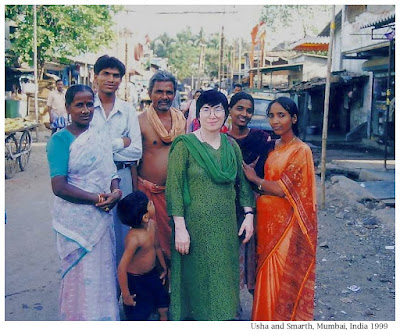In 2018, I had spent a few days in Rishikesh where a chance meeting with a young Swami ji (ascetic) had led to some interesting discussions about how to bring reforms in Hinduism.
In terms of discussions around Hinduism, it is strange how a new aggressive narrative of Hinduism is being pushed in some traditional and social media (especially in English). Hinduism (along with Buddhism and Jainism) is predominently seen as a religion of peace which accepts people of different religions and creeds, as shown by the millennium-long Indian traditions of accepting people persecuted in their own lands including Parsi, Jews, Armenians, etc. International image of Hinduism is also associated with spirituality and Mahatma Gandhi including elements such as Yoga, meditation, non-violence and vegetarianism. However today, there are many persons in India and outside, who talk of Hinduism exclusively in terms of hate, violence and discrimination.
Rishikesh
I was staying near Triveni Ghat and spent a great deal of time sitting along the river bank, with my feet in the ice-cold river waters, talking to old men and women who had come here on pilgrimage from different parts of India. Every afternoon, underneath the trees of Triveni Ghat, persons gathered in small groups and discussed. These discussions were usually very down-to-earth and mixed an earthy humour and occasional obscenity with the spirituality.
Meeting the Swami
The Swami ji was much younger to me, probably around 40 years and was clean shaven. He wore the saffron cloth of renunciation and seemed well educated. I met him near Bharat temple, which is one of the oldest and most beautiful temples in Rishikesh. He was from West Bengal and I talked to him about my experience of living in Assam. I was curious to ask him what had brought him to the path of renunciation, but felt a bit embarassed, it seemed like a very personal question to ask to an occasional acquaintance.We started talking about Upanishads and I explained to him my fascination with Katho-Upanishad, which tells the story of Nachiketa's visit to Yama, the God of death and their discussions about the meanings of life and death. He was very knowledgable and recited different shlokas from that book, explaining his understanding of it.
Swami ji felt that many of the present problems of Hinduism were caused by the disconnect between persons believing in different streams of the religion. According to him, most of the highly educated Hindus among the thinkers, writers, academics and other influential groups are like me, who appreciate the higher teachings of Gita, Veda and Upanishad but do not have the simple faith of common persons in their Gods.
"Persons like you, they dominate the society and what they say is taken up by TV and newspapers. You do not believe in Gods and Goddesses but you give your advice on what should be done about Hinduism. How to celebrate our festivals, where to make our temple, how big should be the statue, how to reform our traditions, you know everything and you want to take all the decisions for all the Hindus. The simple people for whom Ram, Sita, Krishna and Shiva are real, their opinions are considered as inferior and unimportant. This is creating problems in our society because they are the majority but they do not have a voice and people like you are a minority but you have a big influence", he said.
My point was that if a festival like Diwali creates pollution because of crackers or if we use Plaster of Paris statues covered with chemical paints at Ganesh Chaturthi and Durga Puja and after the festivals, throw them into rivers & create pollution, then something has to be done. Why can't we find another way to celebrate these festivals without feeling that others are persecuting us? Our religions need to change with the changed reality of the world.
He said that reforms in Hinduism must come from within, they can't be imposed by others. According to him we need persons like Mahatma Gandhi, or a Guru who understand the bigger picture and who share the faith of common Hindu - they can bring a change from the grassroots.
Conclusions
The words of that Swami ji have remained with me and I have reflected on them. I can see that I have a certain intellectual way of being a Hindu, I do not really believe in temple-rituals or Gods. I like visiting temples, just like I like visiting churches, museums and art exhibitions, for an aesthetic pleasure.The question is how can we promote a grass-root change in them? According to the Swami, the reformist movement has to come from them, and from their gurus and other persons in whom they have faith. These can't be forced by laws. In a way I understand this point, I had written about it in relation to the Sabarimala judgement.






.jpg)

.jpg)
.jpg)
.jpg)

.jpg)
.jpg)
.jpg)
.jpg)

.jpg)
.jpg)
.jpg)
.jpg)
.jpg)
.jpg)
.jpg)


.jpg)
.jpg)


.jpg)

.jpg)

















